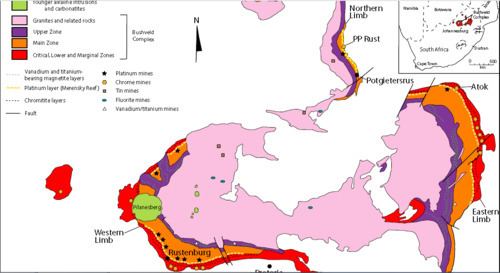 | ||
The Bushveld Igneous Complex (BIC) is a large layered igneous intrusion within the Earth's crust which has been tilted and eroded and now outcrops around what appears to be the edge of a great geological basin, the Transvaal Basin. Located in South Africa, the BIC contains some of the richest ore deposits on Earth.
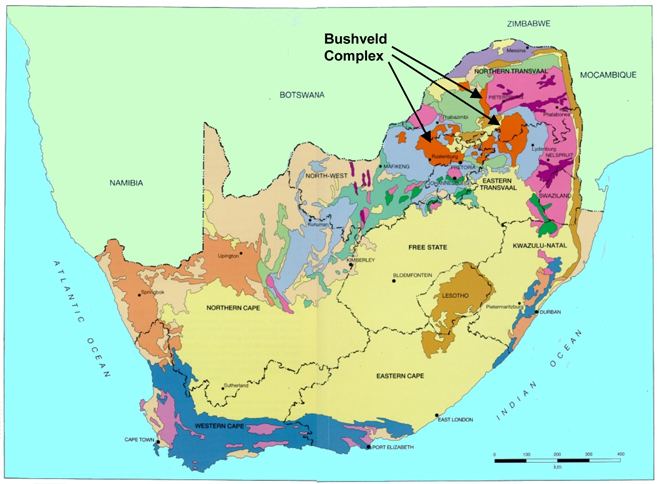
The complex contains the world's largest reserves of platinum-group metals (PGMs)—platinum, palladium, osmium, iridium, rhodium, and ruthenium—along with vast quantities of iron, tin, chromium, titanium and vanadium.
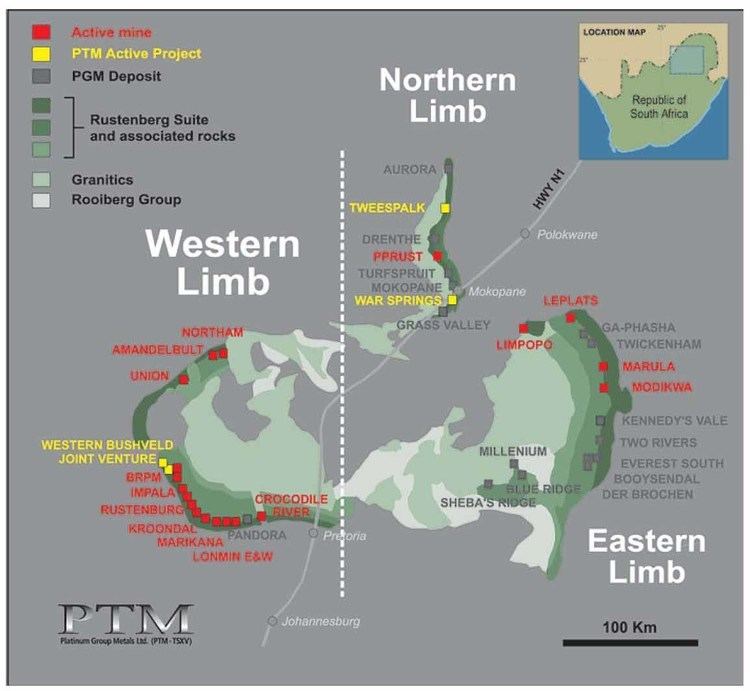
Gabbro or norite is also quarried from parts of the Complex and rendered into dimension stone. The site was discovered around 1897 by Gustaaf Molengraaff.

Origin
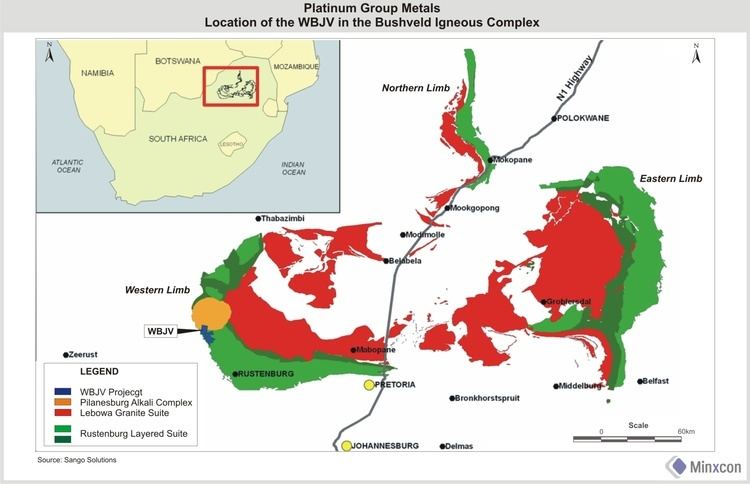
The Bushveld Igneous Complex covers a pear-shaped area in the central Transvaal. It is divided into an eastern and western lobe, with a further northern extension.
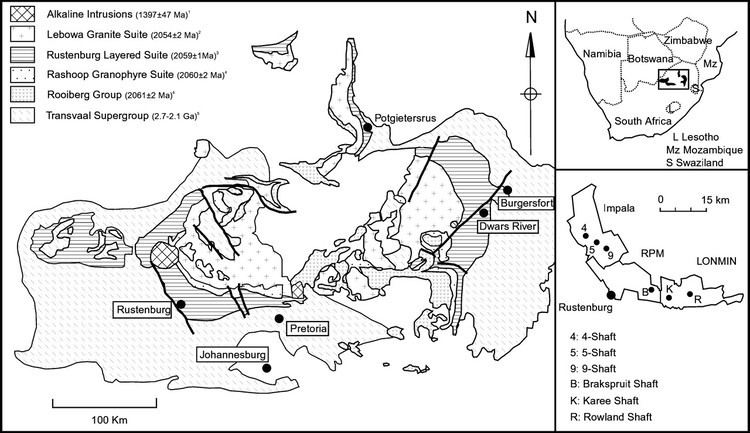
All three sections of the system were formed around the same time—about 2 billion years ago—and are remarkably similar. Vast quantities of molten rock from Earth's mantle were brought to the surface through long vertical cracks in Earth's crust—huge arcuate differentiated lopolithic intrusions—creating the geological intrusion known as the Bushveld Igneous Complex.
These intrusions are thought to predate the nearby Vredefort impact to the south, by some 30 million years. The effects of these injections of molten rock over time, combined with the crystallisation of different minerals at different temperatures, resulted in the formation of a structure rather like a layered cake consisting of distinct rock strata, including three PGM-bearing layers, referred to as reefs. Large portions of the central area are covered by younger rocks.
The extrusions were emplaced over an early diabasic sill, outcrops of which are visible on the southeastern side of the Complex. These are typically greenish in colour and composed of clinopyroxene, altered to hornblende and plagioclase, and are regarded as the earliest phase of the Complex.
The Complex includes layered mafic intrusions (the Rustenburg Layered Suite) and a felsic phase. The complex has its geographic centre located north of Pretoria in South Africa at about 25° S and 29° E. It covers over 66,000 km2 (25,000 sq mi), an area the size of Ireland.
The complex varies in thickness, in places reaching 9 kilometres (5.6 mi) thick. Lithologies vary from largely ultramafic peridotite, Chromitite, harzburgite, and bronzitite in the lower sections to mafic norite, anorthosite, and Gabbro toward the top, and the mafic Rustenburg Layered Suite is followed by a felsic phase (the Lebowa Granite Suite).
The orebodies within the complex include the UG2 (Upper Group 2) reef containing up to 43.5% chromite, and the platinum-bearing horizons Merensky reef and Plat Reef. The Merensky Reef varies from 30 to 90 cm in thickness. It is a norite with extensive chromitite and sulfide layers or zones containing the ore.
The Reef is characterized by an average concentration of 10 parts per million (ppm) of platinum group metals (PGMs), which are found within pyrrhotite, pentlandite, and pyrite, as well as in rare platinum group minerals and alloys. The Merensky and UG-2 reefs, which are part of this geological formation, hold about 90% of the world's known reserves of PGMs. Annually, approximately 80% of the world's platinum and 20% of the world's palladium are extracted from these horizons.
